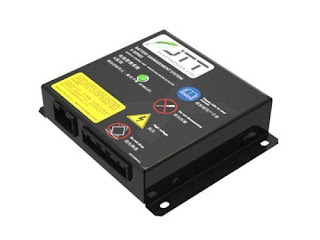Why Battery Management Systems Necessary In Electric Vehicles?
Lithium battery management is gaining popularity and they need a battery management system to operate. Where you can easily connect with lithium battery cells in a series where you have a pack of batteries with the proper management system. Lithium batteries are greater in energy density and have better storage characteristics. Where it easily increases the density of the battery which requires precision electronics to monitor that state. It consists of various components like a cut-off field transmitter, fuel gauge monitor, cell voltage sensor, temperature monitor, real-time clocks, and microcontroller.
The most important function of a lithium battery management system where you can easily ensure that cells can remain safe and work according to the limits, where the individual can take action without any limits. Where lithium-ion BMS supplier helps to connect the loads of voltage which goes too low and disconnect the charger if the voltage is high. There are several reasons that lithium battery management system management is necessary, where it has the most advanced technology which adds new functions.
Here are the functions of the Lithium-ion BMS supplier battery are:
Safety Of Electric Vehicle: It offers safety assurance in the electric vehicle where it has a safe point. Where BMS easily captures crucial data like temperature, voltage and other functions which are related to safety. It ensures the thermal management of the battery and monitor which works continuously. Where it easily adjust cooling and trigger other safety mechanism and minimise the chance of risk. BMS controls the current supply and avoids overcharging by enforcing the limit of maximum charge or discharge according to the temperature.
Cell Monitoring And Balancing: The battery cells need to be monitored round the clock. Where they have any extraordinary situation where you need to identify the reports and trigger the safety mechanism. BMS functions are integrated circuit which has cell monitoring algorithms. Where it has a chain of command which passes the collage and temperature to the cell management controller. These algorithms help to calculate properly and give a proper response. Where state of charge (SOC) ensures that the battery is never undercharged and the state of health (SOH) indicates the overall health of the battery which provides insights into the vehicle.
Power Optimisation: The lithium battery management system helps to keep the record of SOC and SOH parameters with the limits as per the specification. It works as a guardian where you can easily determine the extent of the current cell and communicate with EV Supply Equipment and the charger. It has a function where BMS communicates with the motor controller and ensures the voltage level and ensure that it does not get too low. Where the vehicle show alert to the user to charge the battery. BMS controls the recharging of the battery pack. It has an individual battery pack with develops differences in capacity with time and amplifies to charge-discharge the vehicle.
Battery Charging Optimisation: Where battery cells deteriorate. BMS intelligently take the deterioration where it accounts for the result in changes of battery and other parameters like voltage, current, etc. It has instances where you can easily consider the cell where it gets damaged by heat and starts getting charged at low voltage and rest the cells. BMS easily identifies the fault and optimises the charging process with low voltage. It easily reduces the stress and has an overall battery pack which enhances the life overall.
Communication: The major function of BMS is monitoring, collecting information about cell parameters, etc. where it can exchange communication between them. BMS has the main responsibility for communicating with other electronic control units. It easily helps in exchanging data with various battery parameters and motor controllers. It helps in the smooth running function of the vehicle. It takes care of natural charging, and communication which is required for current and output voltage information. BMS easily communicates with charges to monitor and control.




Comments
Post a Comment